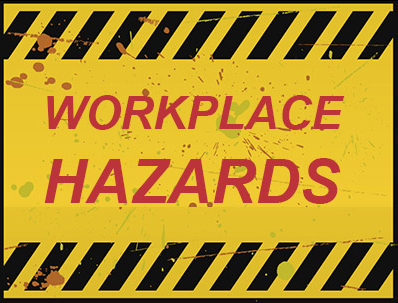harmful radiation, or specific environmental conditions at the workplace
Chemical Exposure and Cancer Risk
Occupational exposure to hazardous substances significantly contributes to cancer risk among workers in industries such as construction, healthcare, and mining. Common carcinogens include asbestos, benzene, and formaldehyde, which are linked to cancers like mesothelioma, leukemia, and nasopharyngeal cancer. For example, asbestos, widely used in insulation and construction, is strongly associated with mesothelioma. Workers can reduce these risks by using personal protective equipment (PPE), ensuring proper ventilation, and undergoing regular safety training on handling hazardous materials.
Radiation Hazards in the Workplace
Radiation exposure, particularly in healthcare and nuclear industries, poses serious cancer risks. Ionizing radiation, such as X-rays, is linked to leukemia and thyroid cancer, while ultraviolet (UV) radiation increases the risk of skin cancers like melanoma. Protective measures include wearing lead aprons and UV-blocking sunglasses, applying sunscreen with a high SPF, and avoiding direct sun exposure during peak hours. Regular radiation monitoring and proper shielding are also crucial in mitigating risks for workers in high-exposure environments.
Risks from Particulate Matter and Dust
Industries like mining, construction, and carpentry expose workers to harmful dust, such as silica and wood dust, which are linked to lung cancer and nasal cancers, respectively. Preventative strategies include using N95 respirators, employing dust suppression techniques like wetting materials, and ensuring adequate ventilation. Regular air quality monitoring and stringent cleaning practices in workplaces can further help reduce exposure and associated cancer risks.
Industrial Fumes and Exhaust Hazards
Industrial environments often expose workers to harmful fumes, such as diesel exhaust and polycyclic aromatic hydrocarbons (PAHs), which are linked to lung and skin cancers. Diesel exhaust is a known carcinogen, while PAHs, common in coal tar and asphalt industries, increase cancer risks. Employers can mitigate these hazards through regular engine maintenance, exhaust ventilation systems, and task rotation. Workers should use appropriate PPE and receive training to safely manage these occupational risks.
Biological Hazards and Infection Risks
Certain biological agents, like viruses, pose cancer risks to health workers and laboratory personnel. Hepatitis B and C viruses are linked to liver cancer, while Human Papillomavirus (HPV) is associated with cervical and oropharyngeal cancers. Vaccination against these viruses is an effective preventive measure. Universal precautions, such as wearing gloves and safely disposing of sharp objects, minimize exposure. Comprehensive education and training in infection control also protect workers from these occupational hazards.
Shift Work and Circadian Disruption
Shift work, particularly night shifts, is linked to cancers like breast and prostate cancer due to disruptions in circadian rhythms and melatonin production. To reduce these risks, employers should optimize shift schedules, limit long-term night work, and encourage healthy sleep habits. Providing bright lighting during night shifts can help mimic natural daylight and minimize physiological disruptions. Combined with lifestyle changes like maintaining a healthy diet, avoiding smoking, and regular exercise, workers can enhance their resilience to cancer risks associated with shift work.
